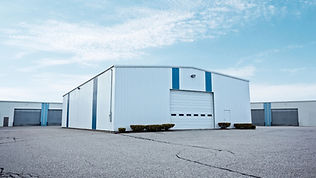
WAREHOUSE

A warehouse is a large, specialized building used for storing goods, raw materials, or finished products before they are distributed for sale, manufacturing, or export. Warehouses play a crucial role in the supply chain, ensuring efficient storage, organization, and distribution of goods.
They are used across various industries such as retail, manufacturing, logistics, and e-commerce.

Applications of Warehouses
Manufacturing
In manufacturing, warehouses store raw materials and components needed for production. Finished products are also stored in warehouses before distribution.
Retail and E-Commerce:
-
Warehouses support the storage and distribution of retail products, ensuring that goods are available for sale in stores or delivered directly to customers.
-
For e-commerce companies, warehouses serve as fulfillment centers for processing and shipping online orders.
Logistics & Supply Chain
Warehouses are central to supply chain management, acting as hubs where goods are stored and sorted before being transported to their next destination.
Pharmaceuticals & Healthcare:
Warehouses in the pharmaceutical industry require precise temperature control and handling procedures to maintain the quality and safety of drugs and medical supplies.
Food & Beverages
Warehouses in this sector often include cold storage for perishable items and must comply with food safety regulations.

Warehouse Operations
Inventory Management
-
Warehouses use inventory management systems (IMS) or warehouse management systems (WMS) to track goods in real-time, monitor stock levels, and prevent overstocking or stockouts.
-
Accurate inventory tracking ensures that businesses can meet demand without delays.
Receiving:
Goods are received from suppliers and entered into the warehouse management system (WMS). The receiving process includes inspection, quality checks, and inventory logging.
Order Picking:
-
The picking process involves retrieving goods from storage based on customer orders or internal production needs.
-
This step is critical in ensuring timely order fulfillment and accurate shipping.
Safety & Compliance:
-
Safety is a top priority in warehouse operations. Compliance with safety regulations, including proper equipment handling, hazard identification, and emergency procedures, is critical to preventing accidents.
-
Warehouses storing food, pharmaceuticals, or hazardous materials must also adhere to strict safety and hygiene standards.
Storage:
After receiving, goods are moved to their designated storage locations. Efficient storage practices involve organizing products based on factors like SKU, batch number, or expiration date to facilitate easy retrieval.
Packing and Shipping:
-
The picking process involves retrieving goods from storage based on customer orders or internal production needs. This step is critical in ensuring timely order fulfillment and accurate shipping.
-
Picking methods can range from manual picking to automated systems that use robotics or conveyor belts.





